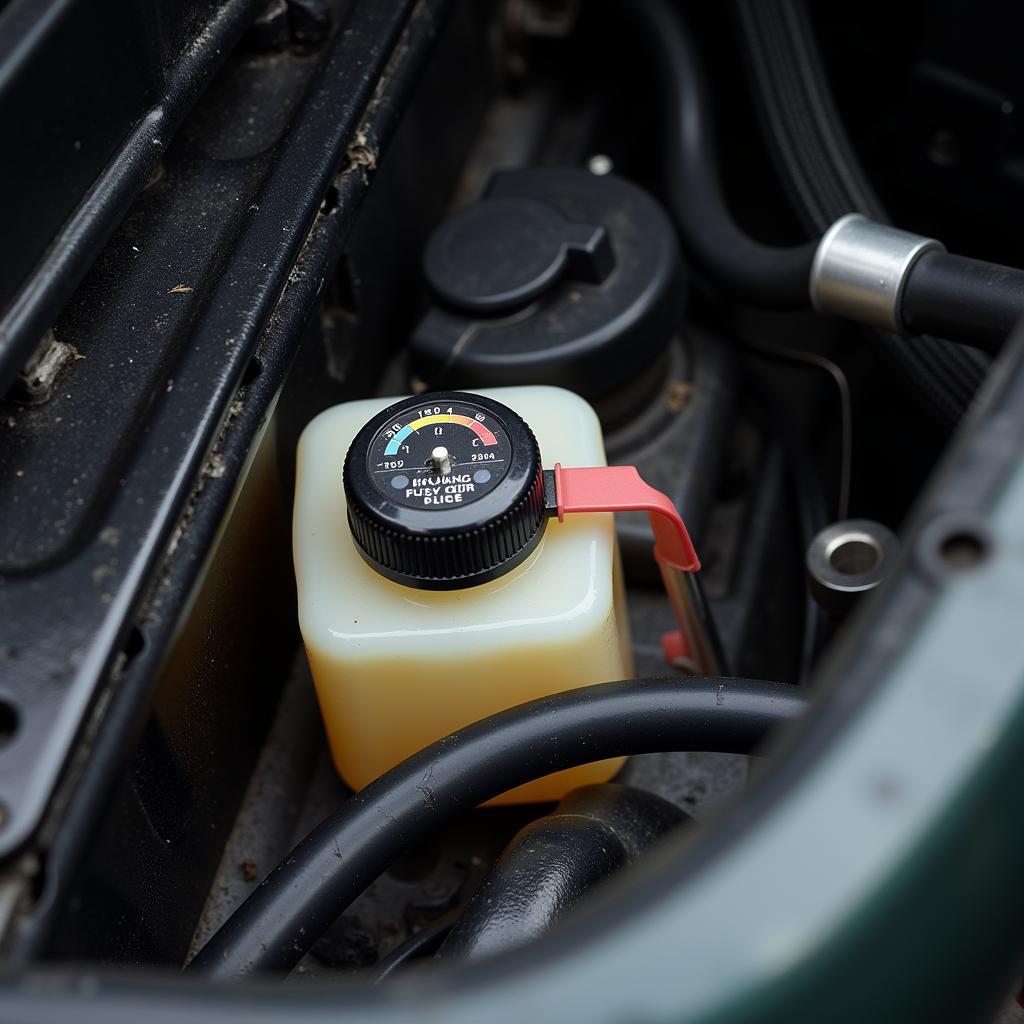Trying to locate the elusive seat belt warning speaker in your 2000 Mercedes-Benz ML320? You’re not alone! This common issue can be frustrating, especially when you’re trying to diagnose why the chime isn’t working. Whether you’re experiencing a faint chime, intermittent sound, or no sound at all, pinpointing the speaker’s location is the first step to resolving the problem.
Unraveling the Mystery of the ML320 Seat Belt Warning Chime
The seat belt warning chime is an essential safety feature, reminding drivers and passengers to buckle up. In the 2000 ML320, Mercedes-Benz opted for a design that integrates this speaker with the instrument cluster. This placement, while seemingly straightforward, can lead to confusion when troubleshooting.
Why Is the Seat Belt Warning Speaker Located in the Instrument Cluster?
Mercedes-Benz, like many automakers, strategically positions components for efficiency and sound quality. Integrating the seat belt warning speaker within the instrument cluster ensures:
- Centralized Sound: Sound projects directly from the dashboard, making it easily audible to all occupants.
- Simplified Wiring: Combining the speaker with the instrument cluster streamlines wiring harnesses, potentially reducing manufacturing costs and complexity.
How to Access the Seat Belt Warning Speaker in Your 2000 ML320
While not a task for novice DIYers, accessing the speaker is achievable for those comfortable with basic car repair. Here’s a simplified guide:
- Disconnect the Battery: Safety first! Disconnect the negative terminal of your ML320’s battery to prevent electrical mishaps.
- Remove Trim Panels: Carefully pry off the trim panels surrounding the instrument cluster. You’ll need plastic pry tools to avoid damaging the dashboard.
- Extract the Instrument Cluster: Unscrew and carefully detach the instrument cluster, taking note of any wiring connections.
- Locate the Speaker: With the instrument cluster removed, you’ll be able to identify the seat belt warning speaker. It’s typically a small, cylindrical component attached to the back or side of the cluster.
Common Causes of Seat Belt Warning Speaker Problems
Now that you’ve located the speaker, it’s time to investigate potential issues. Common culprits include:
- Faulty Speaker: Over time, the speaker itself can fail due to age, exposure to extreme temperatures, or electrical issues.
- Wiring Problems: Loose or damaged wiring connections between the speaker and the seat belt warning system can disrupt the chime.
- Software Glitches: In some cases, a software malfunction within the vehicle’s onboard computer can affect the seat belt warning system.
 Inspecting the Seat Belt Warning Speaker in a 2000 ML320
Inspecting the Seat Belt Warning Speaker in a 2000 ML320
Addressing Seat Belt Warning Speaker Issues
- Testing the Speaker: Use a multimeter to check the speaker’s resistance. If the reading is outside the specified range, the speaker likely needs replacement.
- Inspecting Wiring: Thoroughly examine the wiring harness connected to the speaker for any signs of damage, looseness, or corrosion.
- Software Diagnosis: A professional automotive electrician or Mercedes-Benz dealership can use diagnostic tools to identify and address any software-related issues.
Seeking Expert Help for Your 2000 ML320
Remember, working with automotive electrical systems requires caution. If you’re uncomfortable performing these tasks, it’s always best to consult a qualified mechanic.
“Often, the seat belt warning speaker issue is a simple fix like a loose wire or a blown speaker,” says Master Mercedes-Benz Technician, Wilhelm Krueger. “However, diagnosing software issues can be more complex and might require specialized equipment.”
Importance of a Functioning Seat Belt Warning System
A working seat belt warning system is crucial for safety. It serves as a constant reminder for all occupants to buckle up, significantly reducing the risk of injuries in the event of an accident.
 Buckled Seat Belt in a 2000 ML320
Buckled Seat Belt in a 2000 ML320
In Conclusion
Locating and addressing problems with the seat belt warning speaker in your 2000 ML320 might seem daunting. However, understanding its location within the instrument cluster and the potential causes can guide your troubleshooting efforts. Whether you choose to tackle the issue yourself or seek professional help, remember that a functioning seat belt warning system is essential for the safety of you and your passengers.

